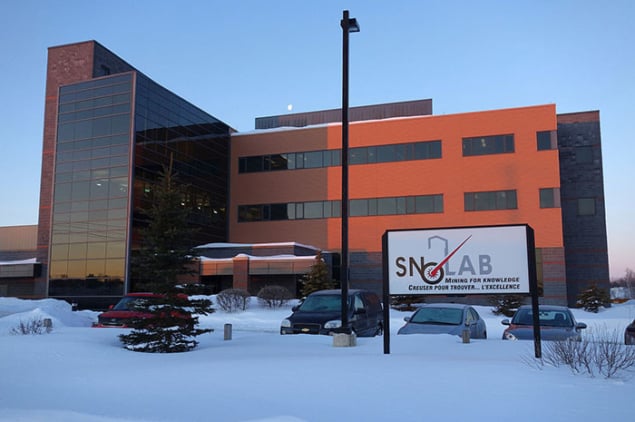
A new way of studying radioactive processes deep inside the Earth has been proposed by an international group of physicists. They want to use a next-generation dark matter detector called a gas-filled time projection chamber to detect geoneutrinos produced deep underground by the radioactive decay of potassium – something that existing detectors cannot do.
Rock samples from deep inside Earth’s crust suggest that much of the planet’s internal heat comes from the radioactive decay of unstable isotopes of uranium, thorium, and potassium. These processes give-off neutrinos called geoneutrinos, which travel easily through the Earth and emerge from its surface.
Geoneutrinos from thorium and uranium decay were detected in 2005 by the KamLAND experiment in Japan and in 2010 by Borexino in Italy. The measurements suggested that the decay of these two materials accounts for about half of Earth’s internal heat. But those and other existing detectors cannot see neutrinos from potassium decay. “The neutrinos are too low in energy,” explains Jocelyn Monroe of Royal Holloway, University of London.
Ionized molecules
Monroe and her colleagues, Michael Leyton of Institut de Física d’Altes Energies in Spain and Stephen Dye of the University of Hawaii, predict that a new type of detector, filled with tetrafluoromethane gas, should see the potassium neutrinos. When a neutrino collides with a gas molecule in the detector, the molecule becomes ionized. An electric field within the detector moves the ion towards another part of the detector that produces an amplified light signal.
To see potassium-produced neutrinos, the detector would need to be about 200–500 m3, contain 10 tonnes of gas, and collect data for 5–10 years, says Monroe. They calculated this in part by modelling the neutrino flux through the detector–solar neutrinos, neutrinos produced in nuclear reactors, and geoneutrinos – for three different detector locations. They considered the Kamioka Observatory in Japan, the Gran Sasso experiment in Italy, and SNOLab in Canada.
The detector is based on a prototype dark matter detector that Monroe’s group has been developing for several years. The gas-filled time projection chamber can measure both the energy and direction of an incoming particle, so it can determine if an incoming particle is coming from overhead or from inside Earth. Current dark matter detectors cannot determine the direction of a particle, which means that their data have much higher levels of noise.
Potent greenhouse gas
However, it will take much more planning and engineering to actually carry out the experiment. “The [proposal] has promise,” says William McDonough of the University of Maryland, adding “[but] the devil is in the details”. He cautions against the use of tetrafluoromethane gas, which is a potent greenhouse gas. If the detector leaks, it could cause severe environmental damage, he explains.
The deployment of such a detector is also contingent on the discovery of dark matter, says Monroe. “If dark matter hasn’t been seen 10 years from now, it’s probably going to be a hard sell to build a detector at this scale for geophysics or for particle astrophysics,” she says.
So, at the moment, it’s unclear if such a detector will ever be deployed. But making ambitious proposals is necessary for procuring funding for expensive particle physics experiments, says Giorgio Gratta of Stanford University. “It’s kind of a long process, and it definitely requires [proposals] like this one that don’t have real data,” Gratta says. “It’s useful that the community at large is reminded that the technology exists, in principle.”
The proposal is described in Nature Communications.



